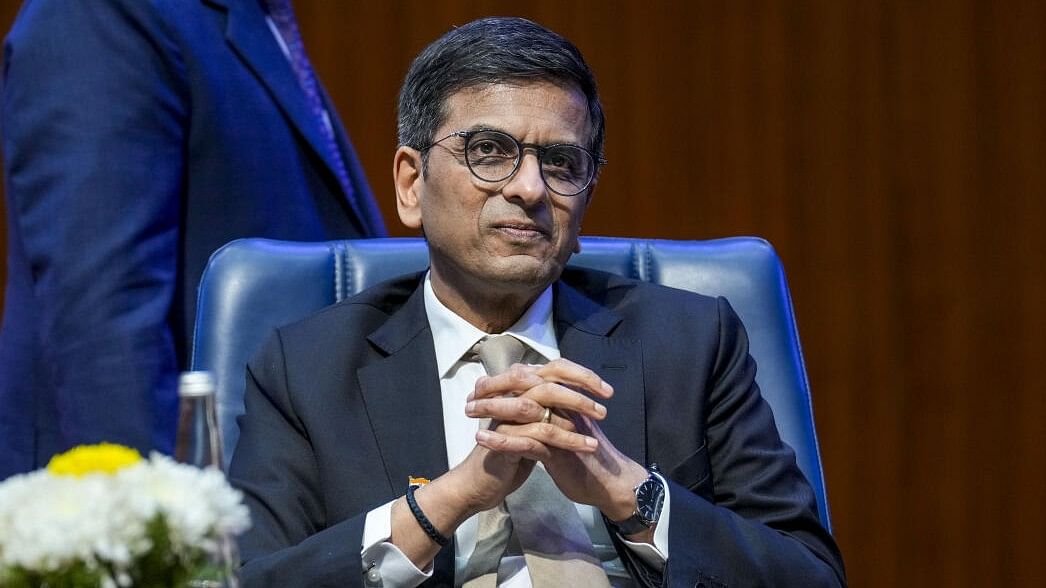
Chief Justice of India D Y Chandrachud
Credit: PTI Photo
New Delhi: Chief Justice of India D Y Chandrachud on Saturday said the culture of adjournments prolonged the agony of litigants and perpetuated the cycle of backlog as courts should not wait for the citizens to die for their cases to be decided.
In his inaugural address at the All India District Judges Conference at Dhordo in Gujarat’s Kutch district, the CJI said that quite often, district courts judgments use gender-stereotypical language, which denigrated the dignity of women, and stressed that judges in the district judiciary must be conscious of the language.
He said the backlog and pendency of cases present a formidable challenge to the efficient administration of justice.
“Imagine a victim of sexual assault whose case remains unresolved in the courts for several years. Isn’t this a clear violation of their fundamental right to access justice? The concept of access to justice should extend beyond mere access to the courts; it should also guarantee that citizens receive timely judgments from courts of law,” he said.
On adjournment culture, he said this practice and the perception is disheartening, as adjournments, which were never intended to be commonplace, have now become normalised within the judicial process.
"We should not wait for our citizens to die for their case to be decided by a court of law," the CJI said.
With regard to social media influence, the CJI said, “Let me tell you, I have had my fair share of scrutiny too! Even if I say just a single word on the bench, it seems to get reported faster than a speeding bullet. But, should we, judges, be unduly affected by this? The role of a judge is to dispense justice impartially, without being swayed by external pressures or public opinions”.
He also said that there is also a rising apprehension that district courts are increasingly reluctant to entertain matters concerning personal liberty.
“The longstanding principle that ‘bail is the rule, jail is the exception’ seems to be losing ground, as evidenced by the growing number of cases reaching High Courts and the Supreme Court as appeals against the rejection of bail by trial courts. This trend warrants a thorough re-evaluation. I want to hear from our district judges why this trend is emerging across the country,” he said.
Emphasising on the critical importance of inclusivity and diversity within the judiciary, he said, “It is heartening to note that strides have been made towards achieving greater gender representation, with women now constituting 36.3 per cent of the working strength of the district judiciary”.
He said recent recruitment trends indicate a positive shift, with more than 50 per cent of selected candidates in the last civil judge (junior division) recruitment exam being women in 14 out of the 16 states examined.
“It is concerning to note that despite the presence of female judges, amenities and facilities catering to their specific needs are sorely lacking. Shockingly, only 6.7 per cent of toilets in District Court complexes have facilities for sanitary napkin vending machines and are female-friendly,” he said.
He said gaps in our infrastructure are not just physical, “they represent symbolic barriers that obstruct the potential of women in the judiciary.”
“Recognising that childbearing and childcare are significant life choices, the absence of adequate facilities not only places an undue burden on women but also signals a profound deficit in our commitment to providing an inclusive and supportive workplace,” he said.
He also stressed on developing technological infrastructure. “Technology is not a privilege reserved for the elite; it is a tool for all those for whom the delivery of justice is intended. Just as sunshine is said to be the best disinfectant, I believe that technology is the best tool at our disposal to eliminate the inefficiency and opacity surrounding judicial processes,” he said.
